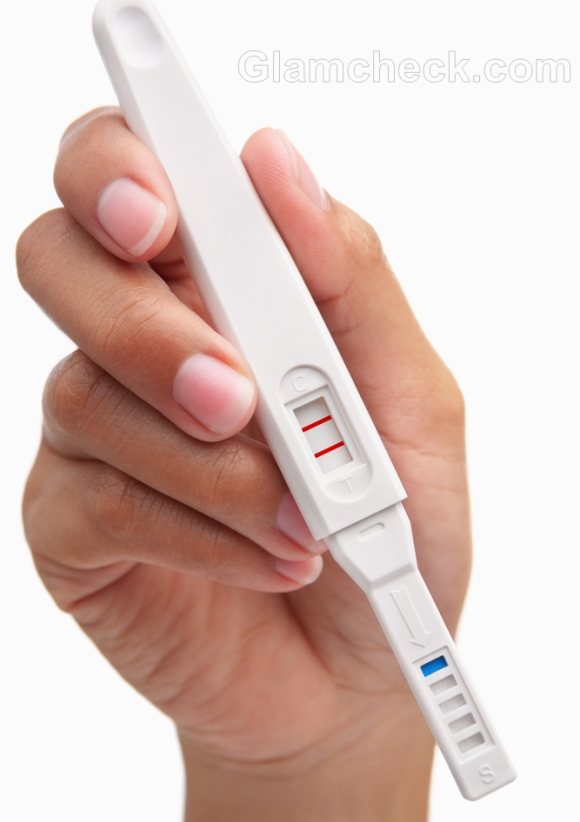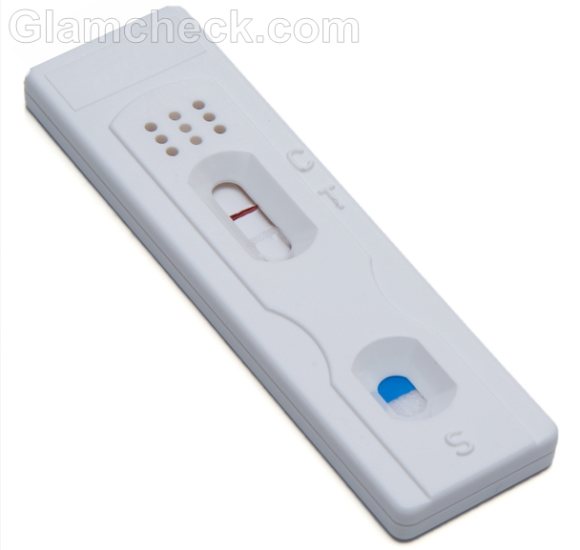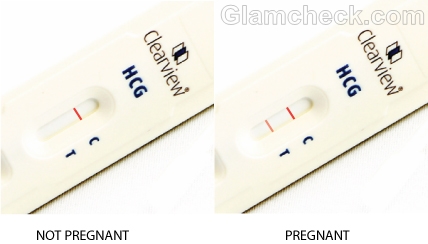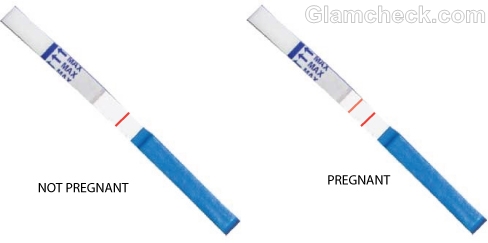If you are trying to get pregnant, then you probably have more than one home pregnancy test in your medicine cabinet so that you don’t have to wait for a doctor’s appointment to hear the good news. Have symptoms of pregnancy that you want to confirm? Or maybe you just want to see if your enthusiastic attempts from a couple of weeks ago bore any fruit? A simple home pregnancy test will give you the answer immediately.
What is a home pregnancy test?
 A home pregnancy test helps you determine whether or not you are pregnant. You can buy it without a prescription, and it is very easy to use. The instructions for use are written in detail on the packet or in a leaflet that comes with the test. All you have to do is read and follow. There is no blood, no poking or prodding, and no pain.
A home pregnancy test helps you determine whether or not you are pregnant. You can buy it without a prescription, and it is very easy to use. The instructions for use are written in detail on the packet or in a leaflet that comes with the test. All you have to do is read and follow. There is no blood, no poking or prodding, and no pain.
Why use a home pregnancy test?
Well, for one thing it’s quick. The whole process of discovering whether you are pregnant with a home pregnancy test takes between three and five minutes.
Then there is the matter of privacy and convenience. You may not want to go to a doctor when you are unsure of a pregnancy. You have to fix an appointment, then commute to the clinic, give blood or urine samples and then wait for the results. A pretty long process which can be frustrating if you have to do it over and over.
If the baby is not something you want and you just want to confirm whether you are pregnant so you can plan what to do next, you may not be too comfortable seeing a doctor to find out as it may be emotionally trying for you. A home pregnancy test allows you to discover your pregnancy in the privacy of your home and gives you a safe space for your thoughts and emotions at discovering the truth.
You can easily buy a home pregnancy test at any medical store or family planning centre without a prescription. The kits are widely available and you can buy as many as you want. They are not very expensive so it is far more economical than paying for lab work. Even online stores are starting to stock them, in case you are too shy to go to a pharmacy.
If it’s the weekend and you can’t wait till your doctor’s appointment on Monday to find out if you are pregnant, you can just use a home pregnancy test and within minutes your suspicions (or fears) will be confirmed.
In a few years, the home pregnancy test will answer more than the question ‘am I pregnant?’ In fact, there is already a new kind of home pregnancy test on the market that not only tells you whether or not you are pregnant but tells you the sex of the baby as well. It is not a traditional home pregnancy test, in the sense that it requires a blood sample instead of a urine sample. You simply prick your finger like you would for a blood sugar test and feed the sample to the home pregnancy test device, which will read the DNA in the blood and determine the sex of the foetus. But you will have to be at least seven weeks pregnant before you can take the test as the foetus needs to develop to a certain stage before the test can work.
How does a home pregnancy test work?
 When a sperm fertilises the egg, it is called a pre-embryo. This pre-embryo transforms itself into a multi-cellular organism and then implants itself on the wall of the uterus where it will grow into a foetus and finally a baby. It is only after the pre-embryo has implanted itself successfully on the uterine wall that pregnancy is said to have occurred. And it is only then that the body starts to produces the pregnancy hormone known as hCG or human Chorionic Gonadotropic. This is only present in your body if you are pregnant. There can be no other reason for this hormone to be in your blood and urine. The level of hCG in your urine and blood will increase every day and will peak at about 90 days. All a home pregnancy test does is pick up on the presence of hCG in your urine.
When a sperm fertilises the egg, it is called a pre-embryo. This pre-embryo transforms itself into a multi-cellular organism and then implants itself on the wall of the uterus where it will grow into a foetus and finally a baby. It is only after the pre-embryo has implanted itself successfully on the uterine wall that pregnancy is said to have occurred. And it is only then that the body starts to produces the pregnancy hormone known as hCG or human Chorionic Gonadotropic. This is only present in your body if you are pregnant. There can be no other reason for this hormone to be in your blood and urine. The level of hCG in your urine and blood will increase every day and will peak at about 90 days. All a home pregnancy test does is pick up on the presence of hCG in your urine.
So if a home pregnancy test is taken too early in the pregnancy, the kit may not be sensitive enough to read the levels of hCG. If you wait for a few days and re-take the test, you might find that the results differ.
How to use a home pregnancy test?
A home pregnancy test comes in the form of a preg colour card or stick. The test should come with a leaflet that gives detailed instructions on how to use it. Make sure that you read this very carefully and follow instructions to the T.
 Depending on the brand you buy, there are two methods of testing. One is to pee directly on the stick or dip it in a sample of your urine. And the other is to deposit a sample of your urine in the sample ‘well’ with an dropper. The method does not make a difference to your test results. It is merely a matter of preference.
Depending on the brand you buy, there are two methods of testing. One is to pee directly on the stick or dip it in a sample of your urine. And the other is to deposit a sample of your urine in the sample ‘well’ with an dropper. The method does not make a difference to your test results. It is merely a matter of preference.
Here are a few things to keep in mind when taking a home pregnancy test
- It is best to do the test with the first morning urine. This will give you a more accurate reading as the hCG has had the time to mix with the urine. If you cannot use morning urine or if you want to do a test in the middle of the day, then the urine you use for testing should be in your bladder for at least four hours.
- Use a clean, dry container to collect the urine sample.
- Place the pregnancy strip (pregcolor card) on a flat surface.
- Take out 2-3 drops of urine from the container with the help of the dropper and gently drop it in the circular groove marked with ‘S’.
- After peeing on the stick or depositing a sample, you will have to wait for 3 to 5 minutes while the home pregnancy test does its work.
- Certain medications can affect the results of your home pregnancy test. Check the packet of the home pregnancy kit for a list.
Interpreting a home pregnancy test

If you look at the preg colour card, there will be two windows, or just one window with two sections. One window will be marked with a ‘C’ and the other window will have a ‘T’. The C stands for control. The T stands for test – as in the test sample; this is where a line will appear in case you are pregnant. If you are not pregnant, this section will remain blank. A band will always appear under the ‘C’ as this indicates the comparison that will be carried out to determine the result of the ‘T’ window.
 If this is all too complicated for you, just remember a simple rule of thumb; two lines – pregnant, one line – not pregnant.
If this is all too complicated for you, just remember a simple rule of thumb; two lines – pregnant, one line – not pregnant.
If there is no band in either window, then the test is invalid. Either the home pregnancy test has expired or it is not working properly. You will have to take the test all over again.
Is a home pregnancy test reliable?
According to statistics, a home pregnancy test is reliable 97% of the time provided it is used as per the instructions on the box. There are, however, times when a home pregnancy test may not be accurate. For example, if taken too soon after conception, you may get a negative result because the levels of hCG in your body are still too low to be detected at that point. The accuracy will depend on the sensitivity of the home pregnancy test as well. Ask your chemist for the best brand to ensure that you are getting the most accurate reading. Since there is no indication of sensitivity written on the packet itself, you’ll have to take your chemist’s word for it, or you can ask your doctor.
Even though a home pregnancy test is quite accurate, you will still be required to take further tests when you go in to see your doctor.
Image: Shutterstock
